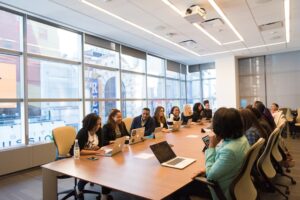Labor
labor
Labor refers to human resources (also called human capital) — both physical or intellectual.
You’re adding to your own human resources right now by learning. You may possess certain human resources already—perhaps you have an athletic gift that enables you to play sports and get a scholarship or you use your artistic talent to make creations that others buy—but you can also develop them through job training, education, experience, and so on.

The word labor often calls to mind physical labor—working in a factory or field, constructing a building, waiting tables in a restaurant—but it can refer to any human input (paid or unpaid) involved in the production of a good or service. This broader definition of labor is particularly important in today’s technology-driven business environment which relies heavily on the intellectual contributions of the labor force. Intellectual contributions include experience in and out of school, training, skills, and natural abilities. In order to remain competitive, businesses place a premium on employees who bring these “hard skills” to the table. Many of the advances in our world today are the result of the application of intellectual human resources.
Finally, labor brings creativity and innovation to businesses. Businesses use human creativity to address changes in consumer preferences and to invent goods and services that consumers haven’t even imagined yet. Without creativity, innovation would stall, and economies would stagnate.